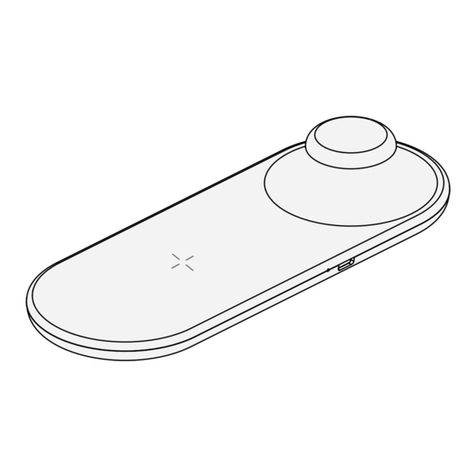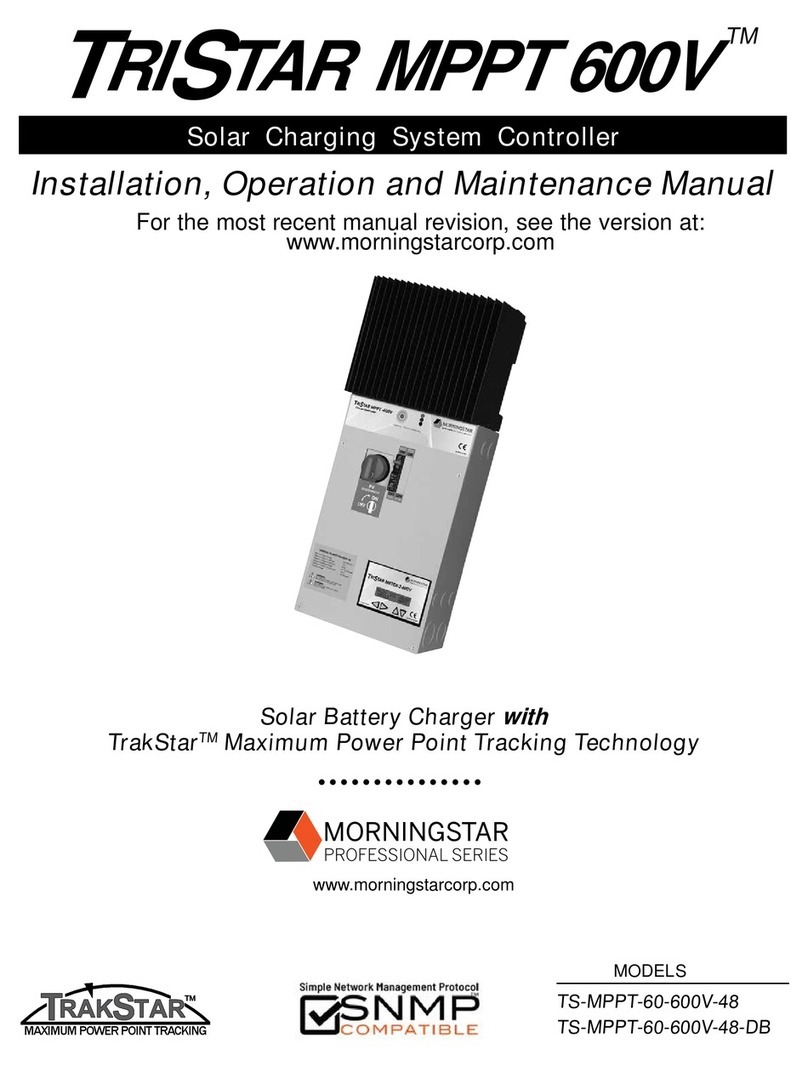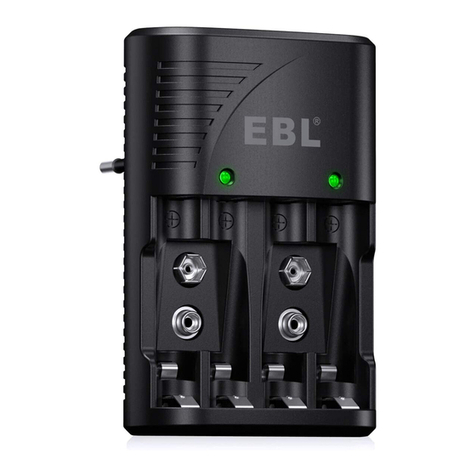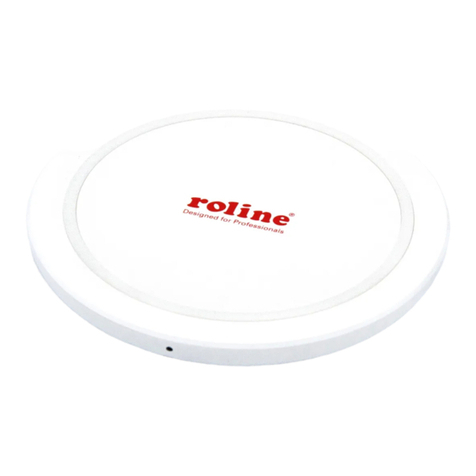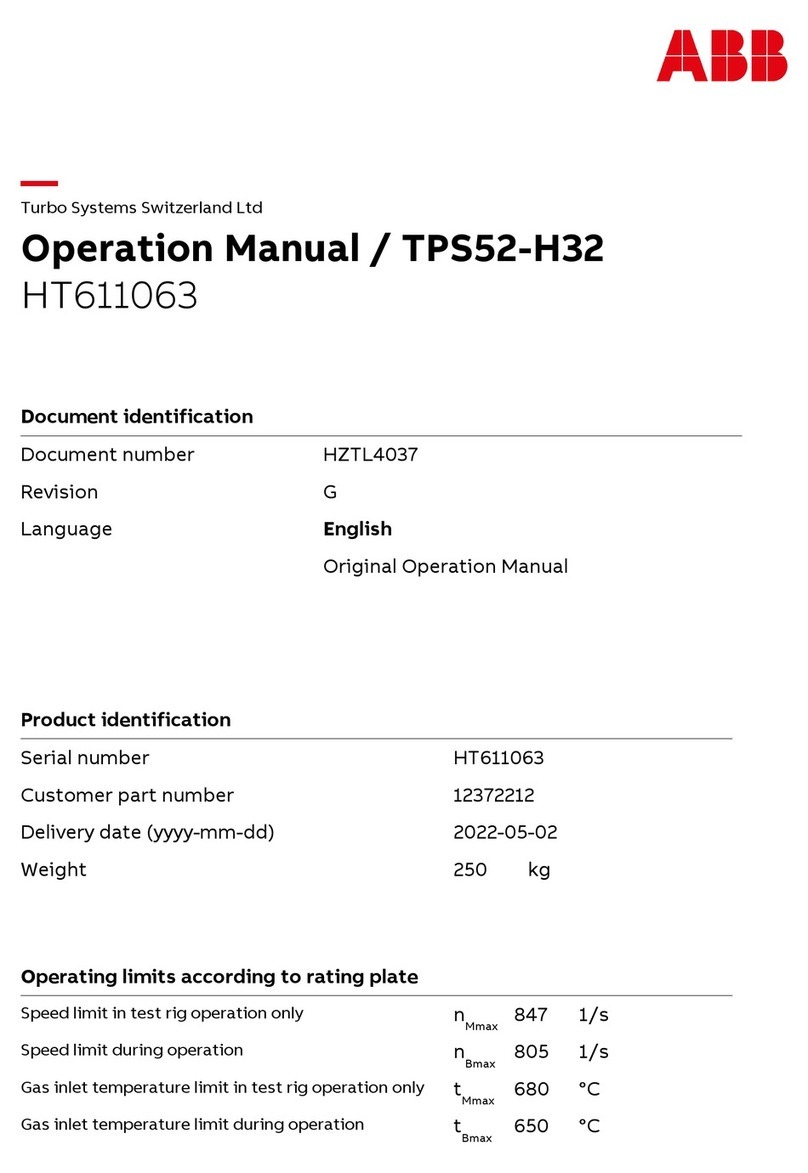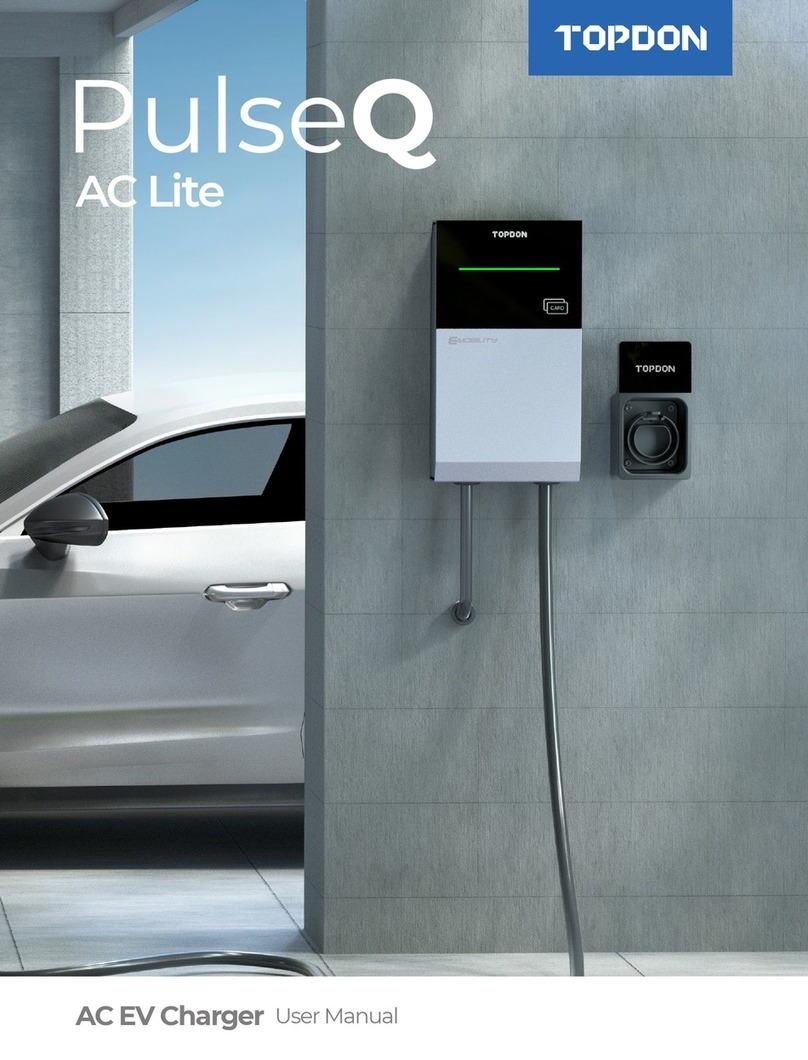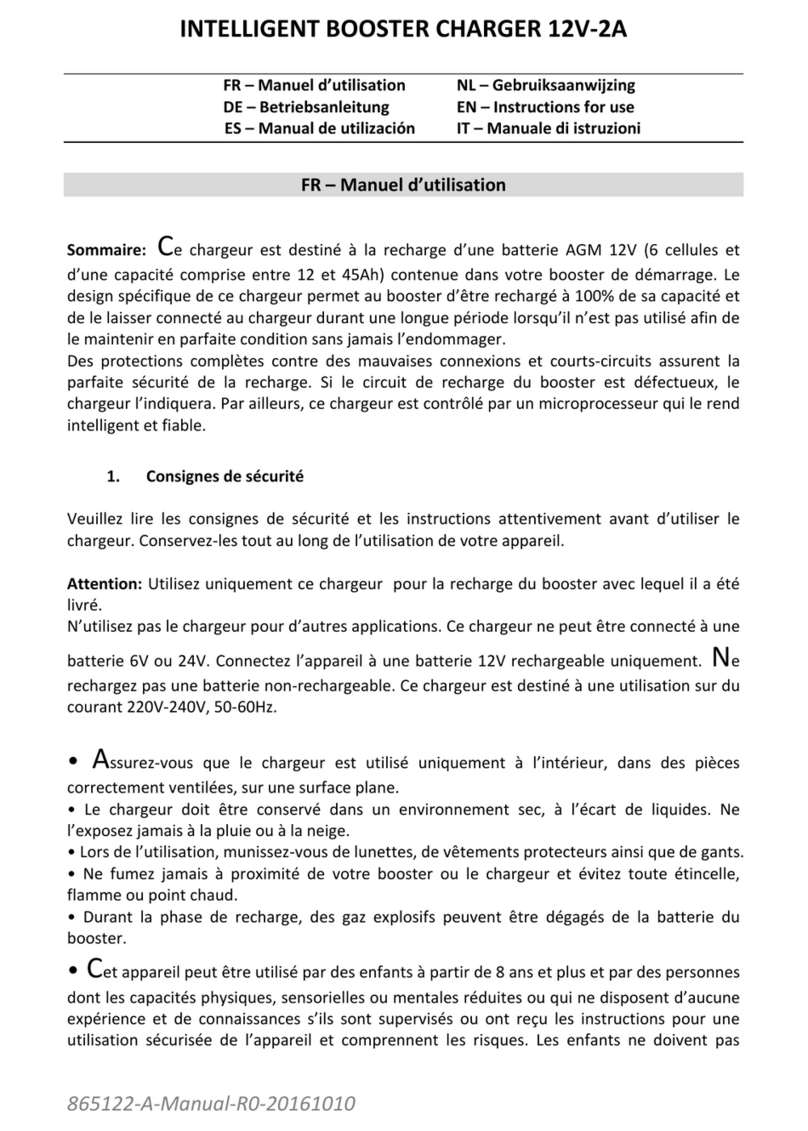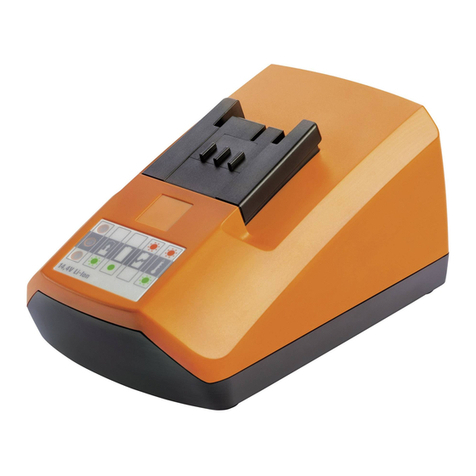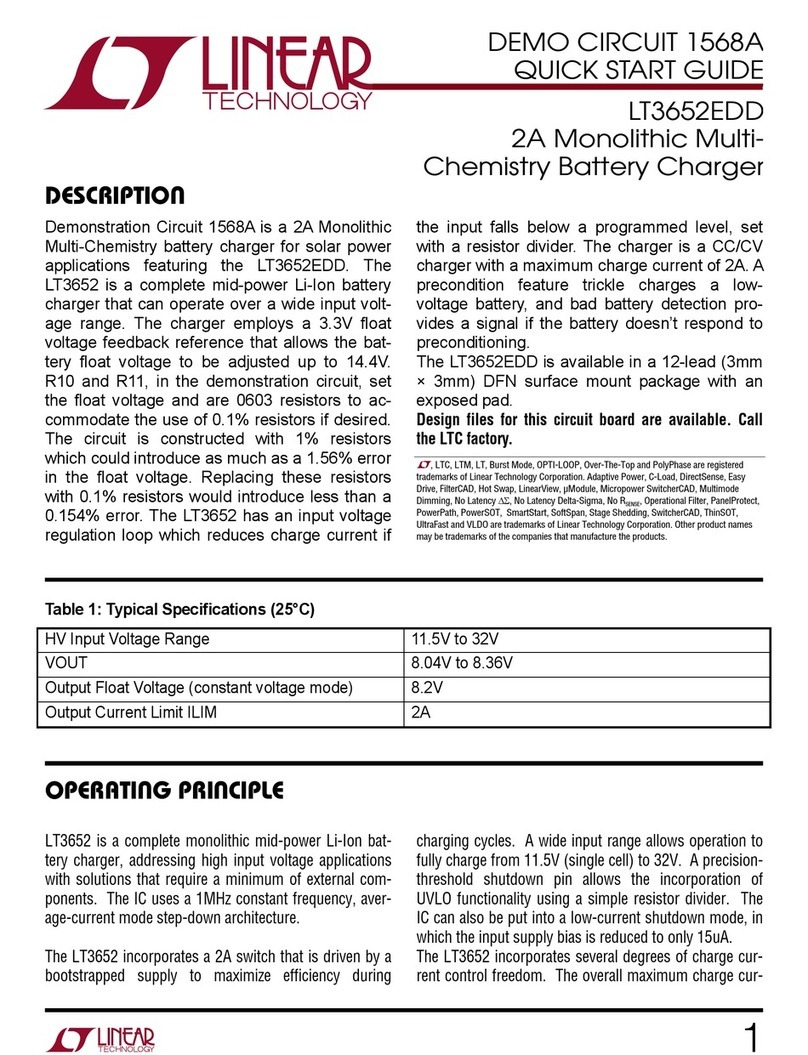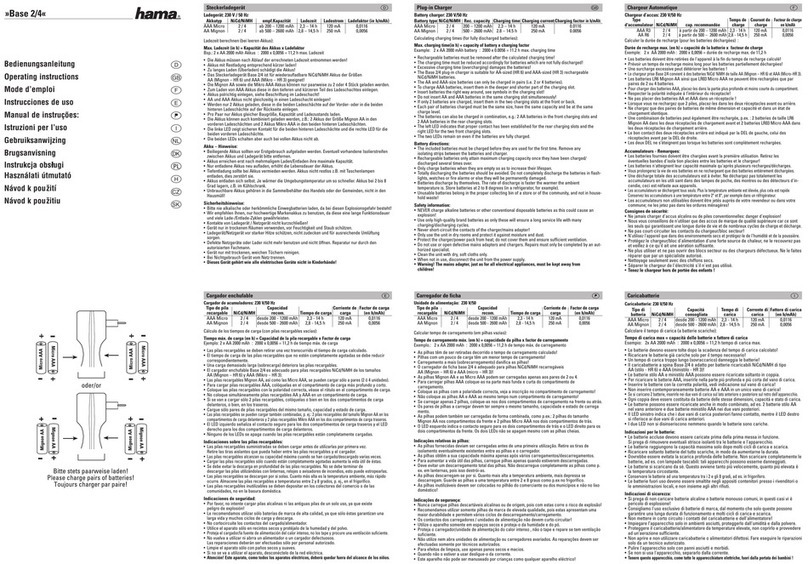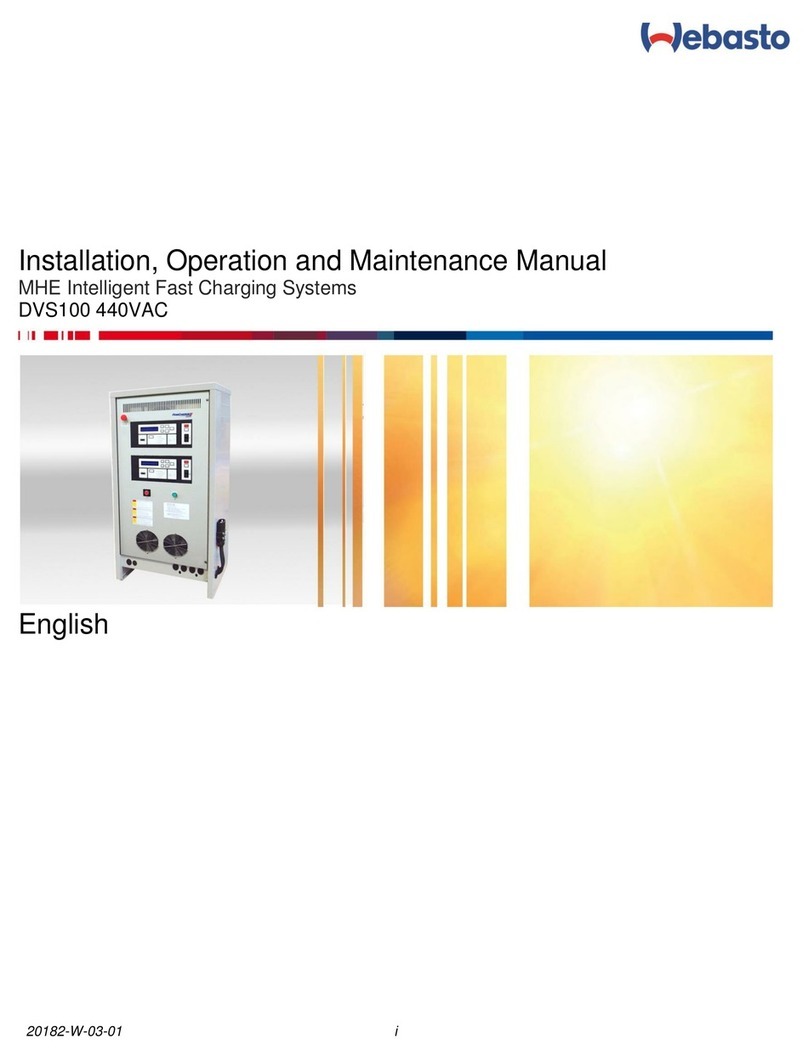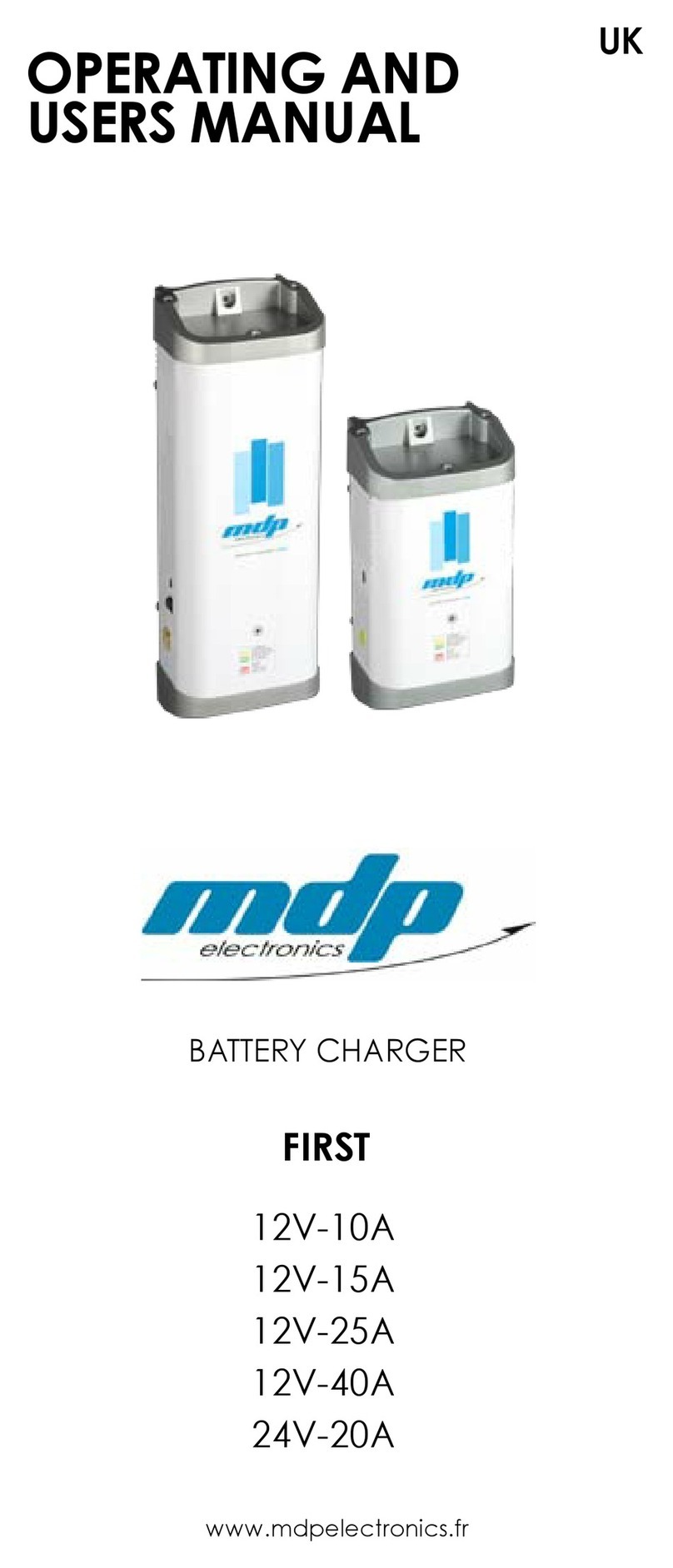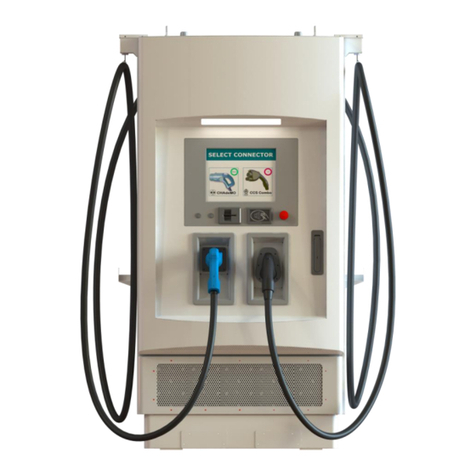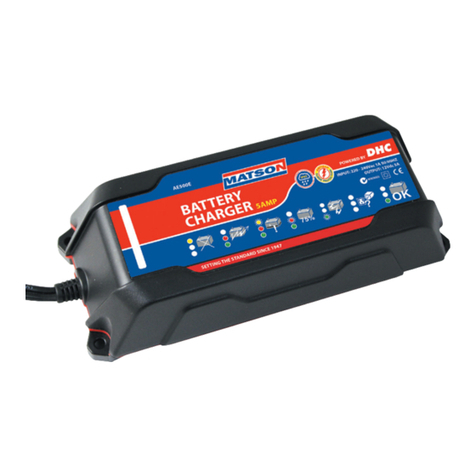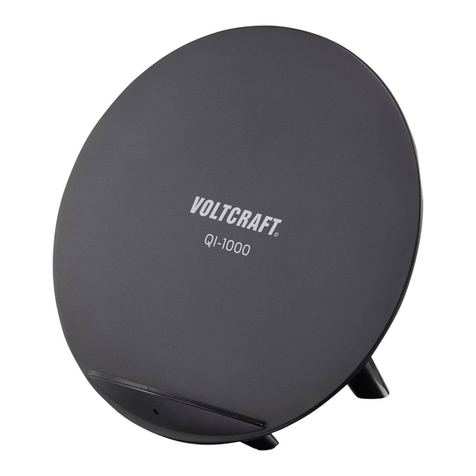EVB BCP-A2N-P User manual

evb.com
WWW.EVB.COM
OCPP
EV Charger
Installation Manual
VERSION: 20231218-01
www.evb.com
info@evb.com

Important safety instructions
●
1. Safety Information
P-01
P-01
2. Product Introduction
2.1. Product Appearance
2.2. Parameter table
2. . 3 Features
2.4. Protection Functions
●
●
●
●
P-02
P-02
P-03
P-04
P-06
3.1. Installation Considerations
3.2. Minimum Installation Requirements
3.3. Position
3.4. Height
3.5. Power Supply
3.6. Accessories List
3 7 Installation Step. .
3.8. SIM Card Installation
●
●
●
●
●
●
●
3. Installation Instructions
●
P-08
P-08
P-08
P-08
P-09
P-09
P-10
P-17
P-08
●
●
●
●
4.1. Buttons On Charger
.2. Buzzer4
.3. Dynamic Load Balancing Kit4
4.4. LED Lights Display
. . Firmware Update via OCPP Server4 5
4. Operating instructions
●
P-18
P-18
P-18
P-19
P-23
P-18
5. Warranty P-24
6. Manufacturer self-declaration P-24
CONTENTS
www.evb.com
OCPP EV Charger Installation Manual
evb.com OCPP EV Charger Installation Manual
evb.com
G R E E N S M A R T

PAGE 01/02
www.evb.com
1. Safety Information
evb.com 2. Product Introduction
evb.com
Important Safety Instructions
This document contains important instructions and warnings that must be followed when installing and maintaining the EV Charger.
Read this entire mandatory document before installing or using the EV charger.
This device should be supervised when used around children.
The BCP series EV Charger must be grounded through a permanent wiring system or an equipment grounding conductor.
Do not install or use the EV Charger near flammable, explosive, harsh, or combustible materials, chemicals, or vapors.
Use the EV Charger only within the specified operating parameters.
Never spray water or any other liquid directly at the wall mounted EV Charger. Never spray any liquid onto the charger handle or
submerge the charger handle in liquid. Store the charger handle above the ground to prevent unnecessary exposure to contamination
or moisture.
Stop using and do not use the EV Charger if it is defective, appears cracked, frayed, broken, or otherwise damaged, or fails to operate,
or continue operation.
Do not attempt to disassemble, repair, tamper with, or modify the EV Charger. The EV Charger is not user serviceable. Contact us for
any repairs or modification.
Transporting the EV Charger, handle with care. Do not subject it to strong force or impact or pull, twist, tangle, drag, or step on the EV
Charger, to prevent damage to it or any components.
Do not touch the EV Charger’s end terminals with sharp metallic objects, such as wire, tools, or needles.
Do not forcefully fold or apply pressure to any part of the EV Charger or damage it with sharp objects.
Do not insert foreign objects into any part of the EV Charger.
Use of the EV Charger may affect or impair the operation of any medical or implantable electronic devices, such as an implantable
cardiac pacemaker or an implantable cardioverter defibrillator. Check with your electronic device manufacturer concerning the effects
that charging may have on such electronic devices before using the EV Charger.
Warning
Cautions
Do not use private power generators as a power source for charging.
Incorrect installation and testing of the EV Charger could potentially damage either the vehicle's Battery and/or the EV Charger itself.
Any resulting damage is excluded from New Vehicle Limited Warranty and the EV Charger Limited Warranty.
Do not operate the EV Charger in temperatures outside its operating range of -25°C to +55°C.
That adaptors or conversion adapters are not allowed to be used.
That cord extension sets are not allowed to be used.
Notes
Ensure that the EV Charger's charging cable is positioned so it will not be stepped on, driven over, tripped on, or subjected to damage
or stress.
Do not use cleaning solvents to clean any of the EV Charger's components. The outside of the EV Charger, the charging cable, and the
connector end of the charging cable should be periodically wiped with a clean dry cloth to remove accumulation of dirt and dust.
Be careful not to damage the circuit board when removing the power entry knock-out.
2.1. Product Appearance
1
4
2
3
5
6
1
2
3
4
5
6
Logo
Emergency Button Switch (When the button is pressed, the EV Charger will stop, then rotate the button pop-up reset.)
Function test button
(For WPS connection, and leakage test.)
RFID
Type 2 socket
LED light

PAGE 03/04
www.evb.com
2.2. Parameter table
AC230
1-Phase
Frequency
Rate Charging Current
Standby Power Consumption
Operating Temperature
Operating Humidity
IP Protection
Safety Protection
Operating Altitude
Charger Dimension
Gross Weight
Leakage Detection
Maximum Power
Input voltage/Output voltage
Display
Tethered/Socket
Meter
Input frequency
Leakage Protection, Over Current Protection, Ground Protection, Over Voltage Protection, Under
Voltage Protection, Contactor Adhesion Protection, Neutral and Live Wire Reverse Connection
Protection, Over Temperature Protection, CP Signal Abnormal Protection, Lightning Protection
50Hz/60Hz
6-32A
2W
-25°C ~ 55°C
5%-95%
IP65(Socket IP55)
<2000M
Height: 380mm Width: 169mm Depth: 151/201mm
7KG/5KG
TYPE A+DC6mA leakage sensor built-in
LED Lights
50Hz/60Hz
Socket
Metering Chip
AC400
3-Phase
7.4KW 22KW
Wallbox Models BCP-A2N-P BCP-B2N-P BCP-AT2N-P BCP-BT2N-P
Cable Length 5M/6M
Tethered Socket
Tethered
Storage temperature -40°C ~ 85°C
2.3. Features
-93 dbm
+10db
-12 ~ 9dbm
Sensitivity @30.8% PER
Co-channel C/I
RF Power Control Range
BlueTooth BLE
WIFI
2412 - 2484MHz
IEEE 802.11 b/g/n
13
<20dbm
0.459
Operating Frequency
Range
WI-FIProtocols
Channels
TX Power
EIRP
20MHz/40MHz
OFDM & DSSS
10%
TX bandwidth
Modulation type
Transmitting Duty Cycle
ASK
13.56MHz
21.31 dBuA/m@3m distance
Coil Antenna
Modulation Type
Operating Frequency
H-field strength
Antenna Type
NFC
●
●
●
●
●
●
●
●
●
Connectivity: Ethernet and WIFI connection
Opened Up Detection: Once the charger is opened up, the charger stop charging and make alarm.
App Remotes: Remotely control the charger and have the charging history.
Full Protection: For people’s safety
IP65 level protection
Leakage Protection: with Type A sensor + DC6mA sensor
Temperature Protection: Stop operating once over temperature.
WPS WIFI Connection: Faster connection
Operating Temperature: -25°C~+55°C
2. Product Introduction
evb.com
2. Product Introduction
evb.com

PAGE 05/06
www.evb.com
4G
LTE-FDD:B1/B2/B3/B4/B5/B7/B8/B12/B13/B18/B19/B20/B25/B26/B28
LTE-TDD: B38/B39/B40/B41
4G
Frequency Bands:
LTE-FDD: Max. 150 Mbps (DL)/Max. 50 Mbps (UL)
LTE-TDD: Max. 130 Mbps (DL)/Max. 30 Mbps (UL)
Data:
LTE-FDD: Class 3 (23 dBm ±2 dB)
LTE-TDD: Class 3 (23 dBm ±2 dB)
Output Power:
3G
WCDMA: B1/B2/B4/B5/B6/B8/B19
3G
Frequency Bands:
WCDMA: Max. 384 kbps (DL)/Max. 384 kbps (UL)
Data:
WCDMA: Class 3 (24 dBm +1/-3 dB)
Output Power:
2G
GSM: B2/B3/B5/B8
2G
Frequency Bands:
EDGE: Max. 296 kbps (DL)/Max. 236.8 kbps (UL)
GPRS: Max. 107 kbps (DL)/Max. 85.6 kbps (UL)
Data:
GSM850: Class 4 (33 dBm ±2 dB)
GSM850 8-PSK: Class E2 (27 dBm ±3 dB)
Output Power:
2.4. Protection Functions
Under Voltage
Protection
Lightning
Protection
Over
Temperature
Protection
Ground
Protection
Over Current
Protection
Neutral and
Live Wire Reverse
Connection
Protection
Over Voltage
Protection
CP Signal
Abnormal
Protection
Leakage
Protection
Contactor
Adhesion
Protection
With full protection to avoid all kinds of charging safety hazards, it will automatic power off after the vehicle is fully charged, to protect the car
battery and prolong the working life.
2. Product Introduction
evb.com
2. Product Introduction
evb.com

PAGE 07/08
www.evb.com
Normally, the earth wire should be properly connected, otherwise the EV charger will not work.
For situation where there is no earth connection, in order to enable the EV Charger to operate, it can be set via APP to turn off the earth
detection and it will work, but it will reduce to the leakage protection safety level.
This BCP series AC EV charger must be grounded via a permanent electrical system or equipment grounding conductor.
Before installing an AC EV charger, please confirm the type of grid connection available. If you are unsure of the type of connection
available on the service panel, please consult an electrician or contact ZJBENY for assistance.
Note:Please consult your local electrician or refer to your local code in order to choose the proper wire for the AC EV charger current.
Warning
3.1. Installation Considerations
Note: Throughout the manual, "conduit" is used as the standard term for the protective tubing that houses the service wiring. In regions where
conduit is not used (Europe for example), a cable comprised of service wiring enclosed in a protective jacket may be substituted for conduit if
allowed by local regulations.
Here are some additional guidelines
Conduit needs to be metal and flame retardant.
Use an appropriate circuit breaker.
To keep the housing weatherproof, use cable glands.
●
●
●
●
●
3.2. Minimum Installation Requirements
Calculate the existing electrical load to determine the maximum operating current.
Calculate the distance to ensure minimal voltage drop.
Obtain any necessary permits from the local authority that has jurisdiction and confirm that the follow-up inspection has been scheduled by
an electrician after the installation is complete.
Use only copper conductors.
Use copper wire that meets the specifications of local wiring regulations. The selected cable must be capable of withstanding continuous
loads of up to 40A at all times. The selected circuit protection device must incorporate an appropriate wall-mounted residual current device
(RCD) and corresponding electrical load over current protection.
Installation of the wall charger requires that you:
●
●
●
●
●
3.3. Position
Ensure that the parking position is within range of the charging cable.
There is enough clearance for the charging cable to wrap around and the charging handle can be comfortably positioned on the side of base.
If installed in an enclosed garage, choose to install on the side of the EV charger slot.
For outdoor installations, waterproof protection is recommended but not mandatory.
Install in a well-ventilated space. Avoid installation in enclosed boxes or close to high power appliances.
●
●
●
●
●
3.4. Height
Maximum height (indoor and outdoor): 60 inches (1.5 m)
Recommended height: 47 in (~1.2 m)
Minimum outdoor height: 24 in (0.6 m)
Minimum interior height: 18 inches (0.45 m)
●
●
●
●
3. Installation Instructions
evb.com
2. Product Introduction
evb.com

www.evb.com
3.5. Power Supply
●
230V single-phase power supply
For single-phase EV charger, a single-phase wire (L), Neutral and earth wire must be connected. The phase
voltage between the Line and Neutral wires should be 230V.
For 3-phase EV charger, connect the single phase wire (L1), the neutral wire and the earth wire do not connect
the other phase wires (L2 or L3). The phase voltage between the line and neutral wires should be 230V.
400V three-phase power supply with neutral line
If three phases are applied, all three phases (L1, L2 and L3) and the neutral line should be connected to each
other and the voltage of each phase to the neutral line should be 230V.
●
●
L
N
PE
230V
L1
L2
L3
230V
N
PE
230V
L1
L2
L3
230V
N
PE
400V
230V
230V
3.6. Accessories List
X1
Water-proof cover
① ② ③ ④
⑤ ⑥ ⑦ ⑧
⑨ ⑩
EV charger
X1
Wire box (optional) Mounting bracket RFID card (optional)
X1 X1 X2
M32*1.5 cable gland
X1
M6*8 screws 8*40 socket head
screws and anchorings
X4 X6 X1
Position template
X1
DLB box (optional) Plastic lifter
X1 X1
11
Note:CardtypesupportedbyRFID:RFcardISO14443TypeA,MIFARE®ONE(MF1)card,with theread-writefrequencyof13.56MHz±7K.
wall
≥0.5M
~1.2M
Floor Level
Drill
Side of wall
The 6 points
on the position
plate
wall
screwdriver
Mounting
bracket
8*40
Expansion bolts
Step 1
Position
The bottom of the ⑨ positioning plate is 1.2 m away (recommended), if the
EV charger is installed close to the edge of the wall, the positioning plate
should be more than 0.5 m away from the edge of the wall.
Drilling pilot holes
Drilling the holes according to the instruction on the Position template
for different installation and wiring ways.
PAGE 09/10
Step 2
Install the Mounting bracket
Put the 8*40 Socket head screws' anchoring into the holes, and use the screw
driver make the 6pcs 8*40 Socket head screws to fix the Mounting bracket on the
wall .
3.7.1. Step-by-step Installation Instructions (bottom entry wiring)
3.7. Installation Step
3. Installation Instructions
evb.com
3. Installation Instructions
evb.com

PAGE 11/12
www.evb.com
Step 3
Install the EV Charger to the mounting plate
Align the side hole of EV charger to the panel's side holes.
Installation
Use the 4pcs M6*8 screws to fix the EV charger to the mounting plate as
picture shows (Screws torque 1.5NM-2.0NM).
Step 4
Wiring
Note: Consult with your local electrician or refer to your local code for
proper wire sizing appropriate for the currents in your EV Charger.
Note: It is the installer's responsibility to identify whether additional
grounding is required to ensure that local regulations are met. Grounding must
be installed at the power source and not at the cable entry to the EV
Charger.
As the picture at left shows, use the screwdriver loosing the screws on the
EV charger cover. Wire the cable to the according terminal.
Left hole position Right hole
position
M6*8 bolts
Wiring diagram
Single-phase
wiring diagram
Three-phase
wiring diagram
3.7.1. Step-by-step Installation Instructions (bottom entry wiring)
Note: The torque applied to the screws should be 1.8N-m to
2.2N-m
Step 1
Position
The bottom of the ⑨ positioning plate is 1.2 m away (recommended), if the
EV charger is installed close to the edge of the wall, the positioning plate
should be more than 0.5 m away from the edge of the wall.
Drilling pilot holes
Drilling the holes according to the instruction on the Position template
for different installation and wiring ways.
Step 2
Install the Mounting bracket.
Put the 8*40 socket head screws' anchoring into the holes, and use the screw
driver make the 6pcs 8*40 Socket head screws to fix the mounting bracket on
the wall .
wall
≥0.5M
~1.2M
Floor Level
Drill
Side of wall
The 6 points
on the
position plate
Hole for rear entry
(not limited to the
wall only)
screwdriver
8*40
Expansion bolts
Mounting
bracket
3.7.2. Step-by-step Installation Instructions (rear entry wiring)
3. Installation Instructions
evb.com
3. Installation Instructions
evb.com

PAGE 13/14
www.evb.com
Step 3
Install the EV Charger to the mounting plate.
Find the hole for cut out on the back of EV charger.
Use the 4pcs M6*8 screws to fix the EV charger to the mounting plate as
picture shows (Screws torque 1.5NM-2.0NM).
Step 4
Wiring
Note: Consult with your local electrician or refer to your local code for proper
wire sizing appropriate for the currents in your EV Charger.
Note: It is the installer's responsibility to identify whether additional
grounding is required to ensure that local regulations are met. Grounding
must be installed at the power source and not at the cable entry to the EV
Charger.
As the picture at left shows, use the screwdriver loosing the screws on the
EV charger cover. Wire the cable to the according terminal.
Left hole position Right hole
position
Back of EV charger
perforating
as image
M6*8 bolts
cable through the hole
on the wall and
connect to the back
hole of EV
Wiring terminals
Three-phase
wiring diagram
3.7.2. Step-by-step Installation Instructions (rear entry wiring)
Note: The torque applied to the screws should be 1.8N-m to
2.2N-m
Step 1
Position
The bottom of the ⑨ positioning plate is 1.2 m away (recommended), if
the EV charger is installed close to the edge of the wall, the positioning
plate should be more than 0.5 m away from the edge of the wall.
Drilling pilot holes
Drilling the holes according to the instruction on the Position template
for different installation and wiring ways.
Step 2
Fix the wire box
Put the 8*40 flat head screws'anchoring into the holes and use the screw
driver make the 2pcs 8*40 flat head screws to fix the Wire box Mounting
Template on the wall.
wall
≥0.5M
~1.2M
Floor Level
Drill
Side of wall
Two points on
the top and
bottom of
position plate
screwdriver
PS:Hooks and
socket excluded only for reference
Wire box
8*40
Expansion bolts
3.7.3. Step-by-step Installation Instructions (top entry wiring)
3. Installation Instructions
evb.com
3. Installation Instructions
evb.com

PAGE 15/16
www.evb.com
Step 3
Cut out on the back of the EV charger.
Find the hole for cut out on the back of EV charger.
Use the 4pcs M6*8 screws to fix the EV charger to the mounting plate as
picture shows (Screws torque 1.5NM-2.0NM).
Left hole position Right hole
position
Back of EV charger
perforating
as image
M6*8 bolts
Power cable
wiring diagram
Insert power cord
into the top of
connection box
wiring diagram
Single-phase Three-phase
wiring diagram
Cable box with built
-in cable throughEV
chargerwiring position
3.7.3. Step-by-step Installation Instructions (top entry wiring)
Step 4
Wiring
Note: Consult with your local electrician or refer to your local code for
proper wire sizing appropriate for the currents in your EV Charger.
Note: It is the installer's responsibility to identify whether additional
grounding is required to ensure that local regulations are met. Grounding
must be installed at the power source and not at the cable entry to the EV
Charger.
As the picture at left shows, use the screwdriver loosing the screws on the
EV charger cover. Wire the cable to the according terminal.
Note: The torque applied to the screws should be 1.8N-m to 2.2N-m
Warning
3.7.4. External Meter Installation
Do not connect the power cord before reading and fully understanding all the concepts introduced in this section. If you are not sure
whether the type of power supply on the repair panel is available, please consult an electrician for assistance.
Be careful of electric shock! Before use, use a voltmeter to confirm that there is no voltage on the power supply line or terminal to ensure
that the power has been cut off.
●
●
Disconnect the power supply at home, and find the neutral wire and the live wire at the entrance to the house.
According to the wiring figure, the live wire and the neutral wire are respectively connected to the power grid through cables that support
a current of more than 32A, so that the connection between the power meter and the power grid is completed.
According to the wiring figure, connect the live wire and neutral wire to the interfaces be reserved in the charger respectively through the
cables that support more than 32A , so that the meter is connected.
The AB interfaces on the meter needs to be connected to the AB interfaces in the charger PCB Via a cable that supports 485
communication.
The ground wire of the grid needs to be connected to the ground wire interface which is reserved in charger.
The meter has been configured to fit the charger by default, please do not change the configuration.
Please contact us for technology support if you are going to install meters are not from us.
●
●
●
●
●
●
Single Phase Three Phase
3. Installation Instructions
evb.com
3. Installation Instructions
evb.com

PAGE 17/18
www.evb.com
3.7.5. Set the Operating Current
After installation, users can set the maximum operating current of the EV charger in the APP, Please refer to APP manual for details.
●
①. Use a screwdriver to lightly secure the sealing cover by installing only the top screws at (1.5NM-2.0NM )torque.
②. After sealing cover fixing, put the facia on and fix it on the sealing cover.
③. If you need to open the front cover, change the internal settings, please use the ④plastic lifter to unclench along the edge of the cover.
④. Recommend to install a circuit breaker 40A/2P 30MA.
●
●
●
●
①②③
④
3.7.6. Reinstall the Sealing Cover and Turn on Power
3.8 SIM Card Installation
Note:Ifyouneedtouse4Gmode,pleaseinstallaMicroSIMcard
●
Rest button on PCB Long press for 5s Reset the charger password (Wi-Fi Ap Password and OCPP configuration Password)
To restore the charger to be default settings, after press the emergency stop button and long press the reset button for 20S to achieve.
Press the emergency button while powering on again the EV charge. Then start the OCPP configuration process.
Press
Long Press
Leakage test
WPS mode works, search for WPS and pair.
●
●
●
Function test button
●
Press
Button ejecting
Button ejected
Emergency stop button
Stop the charging
Fixing faults
In operating
4.1. Buttons On Charger
●
4.2. Buzzer
Swipe the RFID card to start the authentication successfully One Short Beep
Two Short Beeps
Five Short Beeps
One Long Beep
One Long Beep
Two Short Beeps
One Long Beep
Swipe the RFID card to stop the authentication successfully
RFID card authentication failed
Enter server configuration mode
Server parameters are configured successfully
Server parameter configuration failed
Leakage test in progress
4.3. Dynamic Load Balancing Kit
The Dynamic Load Balancing Kit is suitable for home charging use. Connect the DLB kit with the charger, to active the DLB function
automatic. Disconnect the DLB kit with the charger, to off-line the DLB function automatic.
●
4. Operating instructions
evb.com
3. Installation Instructions
evb.com

PAGE 19/20
www.evb.com
4.4. LED Lights Display
Normal Status
LED Status Status Description Potential Cause Solution
LED Behavior
The green lights light up
in sequence from top to
bottom, then the yellow
and red lights light up in
sequence until the first
green light blinks
Charger Power
ON self test
Lights OFF No power supply No power Check the power
source
Enter WPS
configuration
The first green light
fast blinking
(ON for 0.25 seconds,
OFF for 0.25 seconds)
In WPS
configuration status
Recheck the
configuration
Standby
The first green light
breathing magenta
The 1-6 green lights
ON, brightness
decreases from
top to bottom
The charger is
reserved
The first green light
slow blinking
(ON for 1 second,
OFF for 1 second)
Wi-Fi connection
failure or wrong
password
1.5G or WPA 2_Enterprise
is not available for charger
2.Ensure password is
correct
3.Restart the APP
The first green and the last
green lights slow blinking.
(ON for 1 second, OFF for
1 second)
Network is not
connected
Charger authorized,
waiting for the
Charging Connector
plug in
Green lights up and
down
The Charging
Connector is plugged
in, waiting for RFID
card authentication
Normal Status
LED Status Status Description Potential Cause SolutionLED Behavior
Green lights end in
the middle
Waiting for the car
start to charge
Charging
Green lights extend
from the middle to
the ends
Charging finished
All green lights ON
Charger is remotely
disabled or not
registered
Yellow lights flashing Configure the chargerCharger is not
configured
4. Operating instructions
evb.com
4. Operating instructions
evb.com

www.evb.com PAGE 21/22
All lights strobe
( 4 times per second)
Contactor failure Contactor adhesion
or tripping
Check whether
the vehicle charging
module is normal
Emergency stop
protection
Yellow lights ON Rotate the
emergency stop
button Pop-up
reset
Emergency stop
button is pressed
Grounding
abnormality
Red lights ON Check whether the
grid connection and
charger wiring is
correct
The ground wire is
not wired or the
neutral wire is
reversed
Over Voltage
Red light once 1.Check the power
supply
2.Check the wire
of power supply
Power supply
has short circuit
or unstable
Under Voltage
Red light twice 1.Check the power
supply
2.Check the wire
of power supply
Power supply
voltage is
insufficient
Leakage fault
Red light thrice 1.Reset with
emergency stop
button
2.Check the charger
connector or vehicle
for leakage
Leakage happens
Fault Status
LED Status Status Description Potential Cause Solution
LED Behavior
Red light flashes
continuously
(Once per second)
Over current Short circuit may
happen
Call for
professional repair
Over temperature
alarm
Red light flashes
(Quartic per
second)
High temperature 1.Wait for charger
cooling
2.Ensure the wiring
of charger terminal
is not loosing
Abnormal CP
signal
Alternating red and
yellow continuously
Red for 0.5 seconds
followed by yellow
for 0.5 seconds
1.Check if the connector
is with water leakage in
2.Ensure the connector
is matched with EV
The connection
between the
charger and the
vehicle is loose
Abnormal CC
signal
Check whether the
charger connector
is firmly inserted
The connection
between the
charger and the
vehicle is loose
LED board is
offline
Yellow light ON
triple
Open the charger cover
and check whether the
light board cable is
connected correctly
and firmly
LED board is fault
or loosing
DLB is offline
Yellow light ON
once, red light
ON once
Check the
connection
between DLB box
and charger
The DLB
connection is
loose
DLB abnormal
Yellow light ON
once, red light
ON twice
The connection
between the DLB
box and the CT is
loose or the CT is
not clamped
1.Check the CT of
the DLB box is in the
correct position
2.Check whether the
DLB box CT is firmly
clamped
3.Check if the phase
sequence of the DLB
box CT is correct
4.Check if the
connection between
the DLB box CT and
the DLB box is firm
Red and yellow
lights flash once
Fault Status
LED Status Status Description Potential Cause SolutionLED Behavior
4. Operating instructions
evb.com
4. Operating instructions
evb.com

PAGE 23/24
www.evb.com
4.5. Firmware Update via OCPP Server
Download firmware
If the EV charger is charging, install the firmware after the
charging is completed.
Extend from the middle
to the ends
End charging
All green lights on
Install firmware
The yellow light lights
up three times
The update is complete, ready to reconnect to the network
Green light No. 1 flashes slowly
(on for 1 second,
off for 1 second).
Network connection
is successful.
Green Light
No. 1 breathing
or other
operating status
Green light
circularly flows
from top to
bottom
or other
operating status
The first and
second green
lights flash
alternately
or other
operating status
The server sends a firmware upgrade command to the EV charger
in the background, and when the set time comes, the firmware
starts to download.
5. Warranty
In order to ensure the normal service life of charging piles and reduce the risks in use, maintenance must be done within the specified time by
professionals with accredited safety maintenance tools.
Three-year free warranty is provided for any damage or malfunction caused by quality problems from the date of production of the
charger.
Damage caused by operation failure, natural force majeure, incorrect installation or instructions for use is not covered.
Repair can only be performed by professionals. If any problem occurs during installation or use, contact your dealer first.
6. Manufacturer self-declaration
1. In order to improve the stability of the charger, BENY will provide software updates for at least three years from the date of manufacture of
the charger.
2. The charger will not collect and save users' sensitive personal data, such as payment information, timestamped location data, audio input
stream or biometric data.
3. The manufacturer will not collect telemetry data of the charger through remote service.
●
●
●
5. Warranty
evb.com
4. Operating instructions
evb.com
This manual suits for next models
3
Table of contents
Other EVB Batteries Charger manuals
